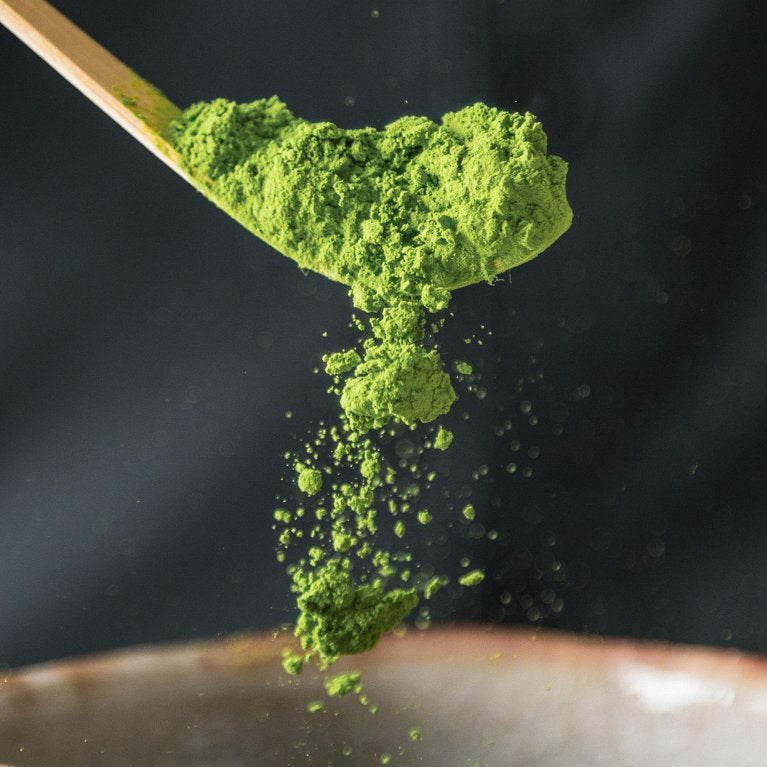
Third Wave Tea —
Are You Afraid of the Dark?
by Hao Jing
Third Wave Tea series
Kuro matcha — a tapestry of cultural history of dark teas and contemporary innovations.
August 17, 2023
History of Black Tea
Dark tea or 黑茶 (not to be confused with black tea — 红茶 in Japanese and Chinese) is probably the least understood tea amongst the six main tea categories. Also known as post fermented tea, dark tea is a unique category that involves a bacterial fermentation of the tea after it has been processed into a finished tea product, mostly as a green tea. This is unlike the oxidation process that oolongs and black teas undergo before they are fully processed into a finished product.
While most people are familiar with and will be able to name at least a couple of teas from the common tea categories, most casual tea drinkers will struggle to name any dark tea apart from Puerh. Speaking of puerh, it is a complicated subject that divides many tea experts to this day. So much so that many consider puerh to be a tea that falls outside the six tea categories. This is because a brand new cake of raw puerh is technically closer to being a green tea than a dark tea due to its low level of fermentation. However, after it is kept for a few years, the low level of moisture content that has been deliberately left inside the tea will allow natural microbes to ferment and change the flavour profile of the tea dramatically.
A newer version of puerh invented in the 1970s is known as cooked/ripe or shou puerh. This type of puerh undergoes a process that speeds up fermentation of the tea through piling and introduction of additional moisture — this is a characteristic of most black teas we know today.

Despite the lack of understanding of dark teas, they are one of the oldest tea types dating back to ancient China when merchants transported bricks of tea through the silk route. These tea bricks underwent fermentation due to the natural weather conditions. Some of the most popular Chinese dark tea are Zang Cha 藏茶 from Szechuan and Liubao 六堡 from Guangxi. Dark teas are especially important to the Tibetans as they provide important nutrients missing from their diet. So much so that they have a saying that roughly translates to “rather three days without food, than a day without tea”. Likewise, Japan has a few post fermented teas that are unique to their culture. Most notably the Goishicha and Awabancha. Unlike the Chinese dark teas, Japanese post fermented teas mostly undergo anaerobic or lactic acid fermentation which lends a unique tart flavour to the brew.
What does the future hold?
When we first embarked on our mission to reinterpret Japanese tea, we knew deep within our hearts that dark tea is a treasure trove that we must excavate.
The complexity of flavours that can be birthed through fermentation is mind boggling; throughout centuries, every great human civilisation has been exploring the art of fermentation. Kimchi of the Koreans, soy sauce of the Chinese, beer of the Germans and yogurt of the Greeks. In modern times, chefs and baristas have contributed greatly to the fermentation knowledge database. Chef René Redzepi and his team at the 3 Michelin starred Noma even went as far as to build an entire philosophy and menu system around the fermentation of various ingredients.

We vividly remember our partner farmer calling us and exclaiming how surprised they were by the Kuro matcha’s aroma when they were grinding it for us. It is an aroma that they had yet to experience in their decades of tea production. It was at that moment that we knew our decision to set up an experimental lab in Kyoto and relocate a group of our team to head the experimental project was worth it. It is a journey with many ups and downs, and one cannot fathom the disappointment when a batch of tea you were looking forward to turns out terrible. But we see these “failed” attempts not as failures but a lesson on what doesn’t work. We hope the next time you enjoy a cup of our Kuro matcha latte, you will spend a moment savouring not just the nutty complex aroma, but also the dark tea’s tapestry of cultural history and contemporary innovations.

















